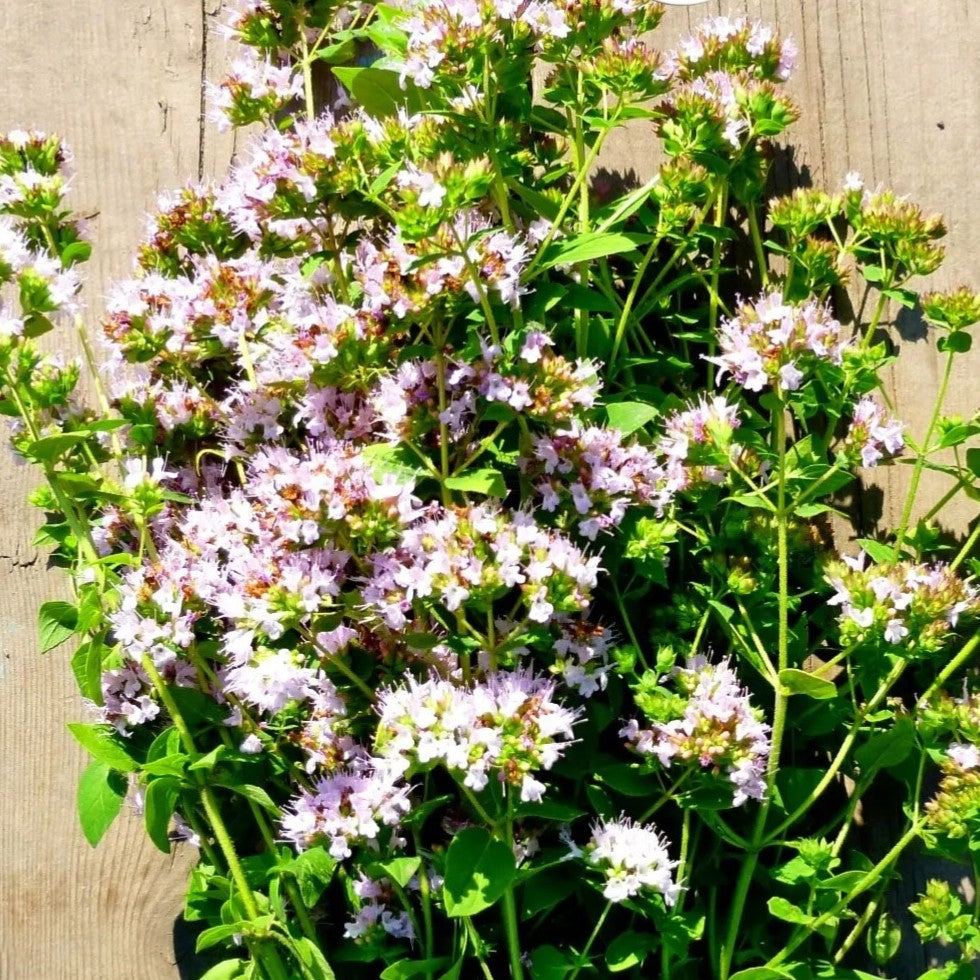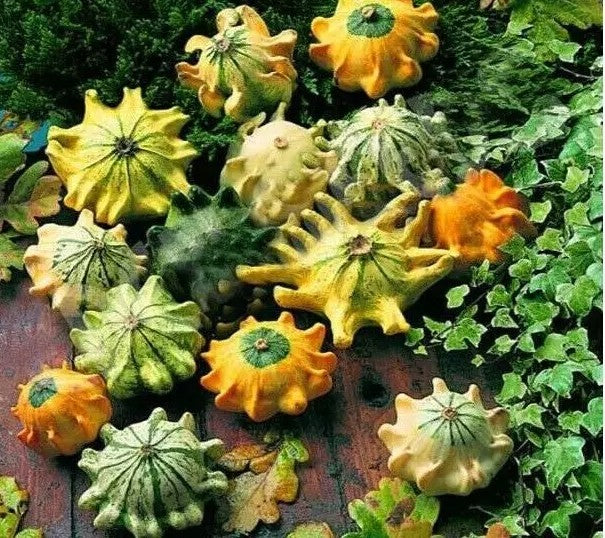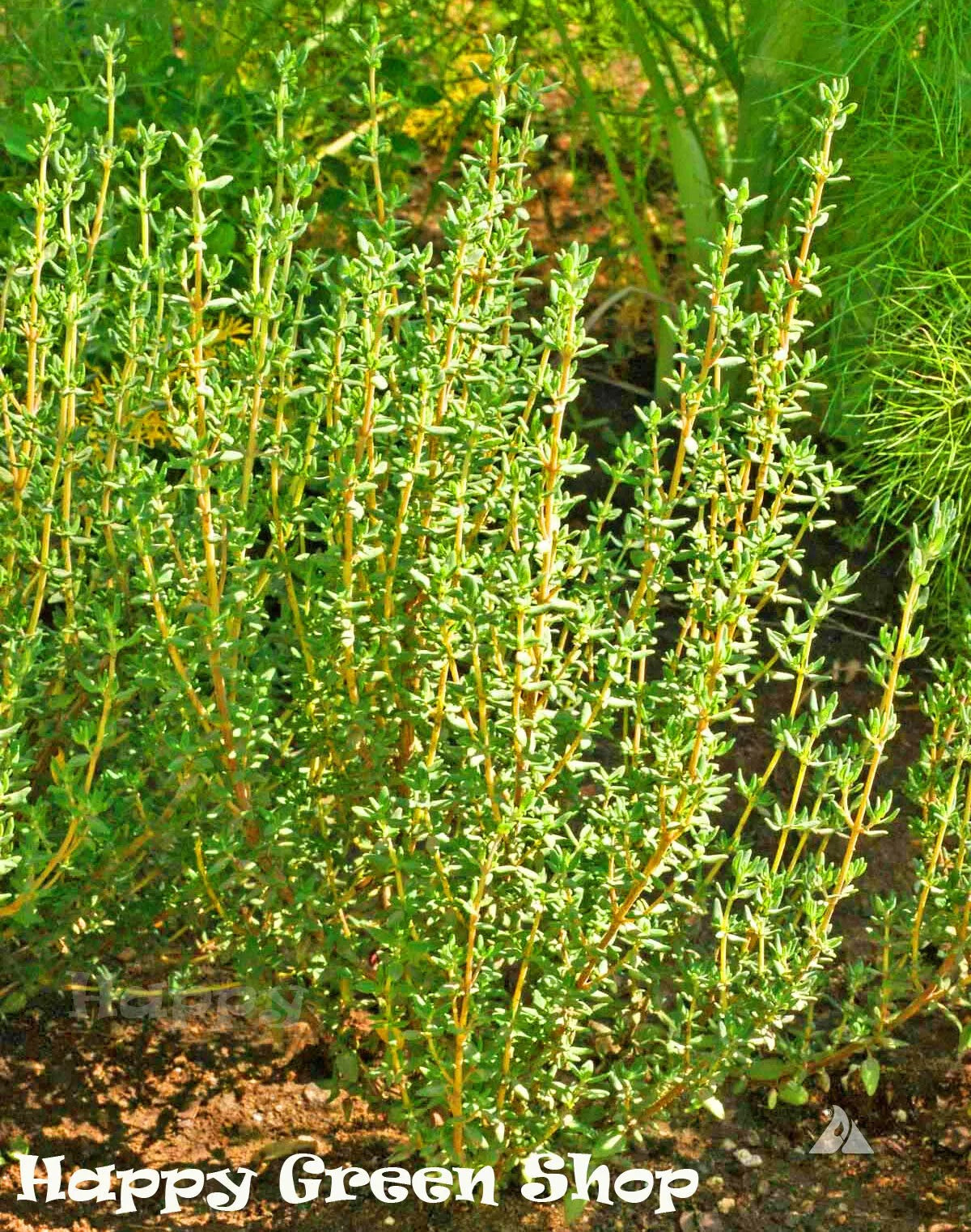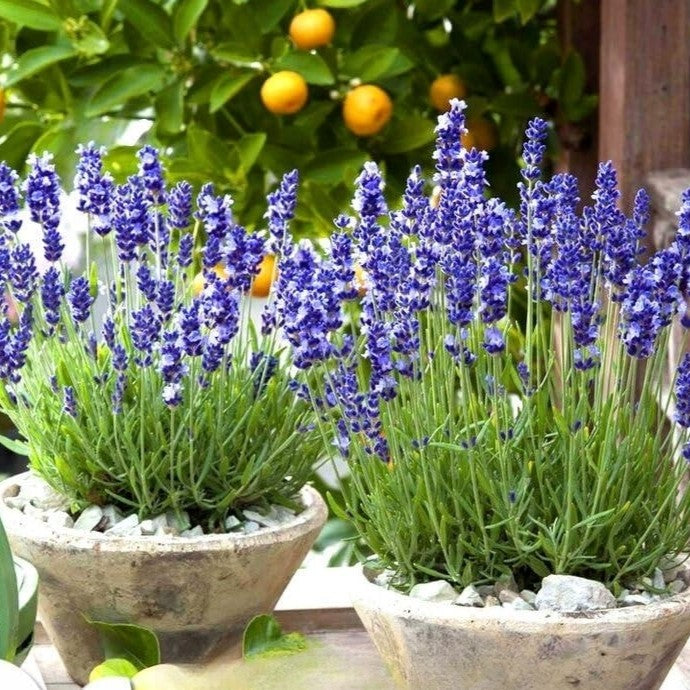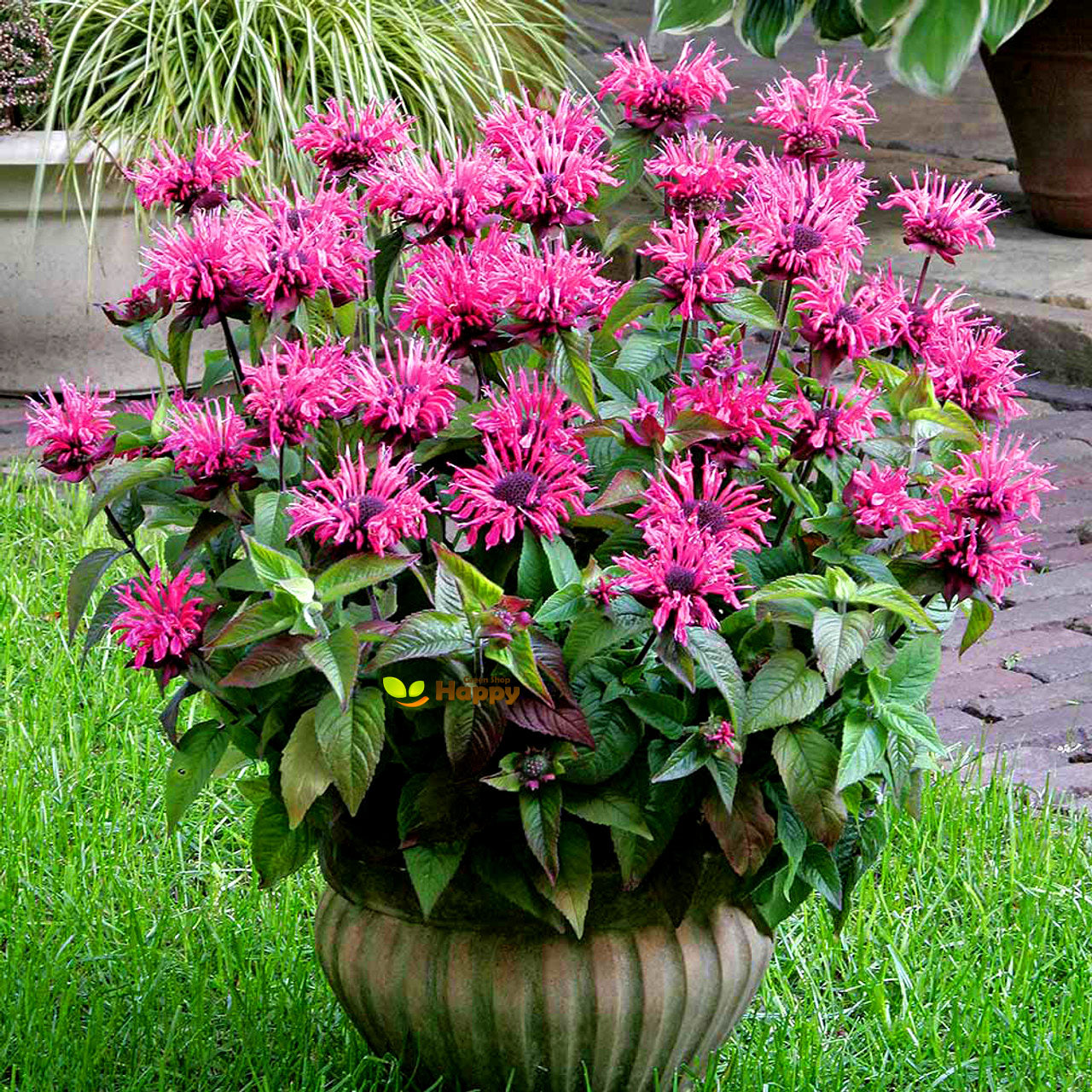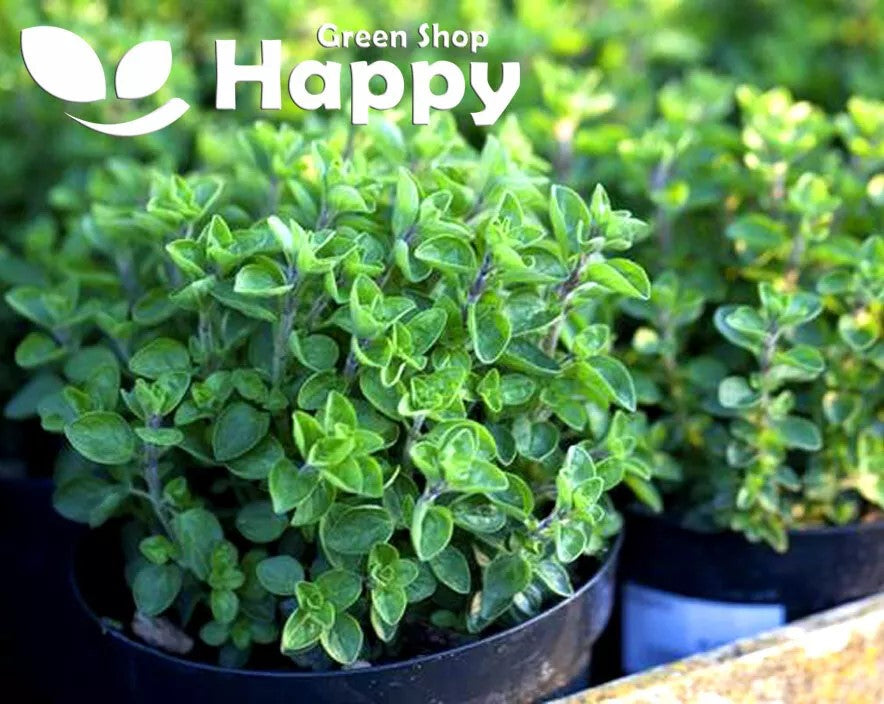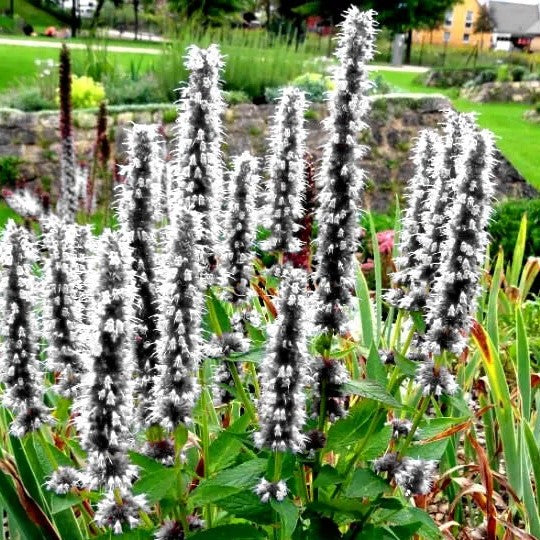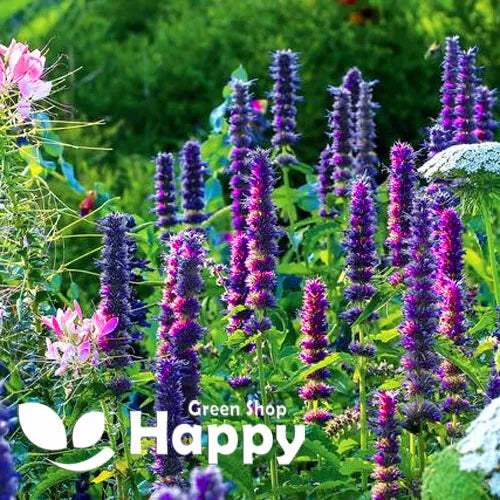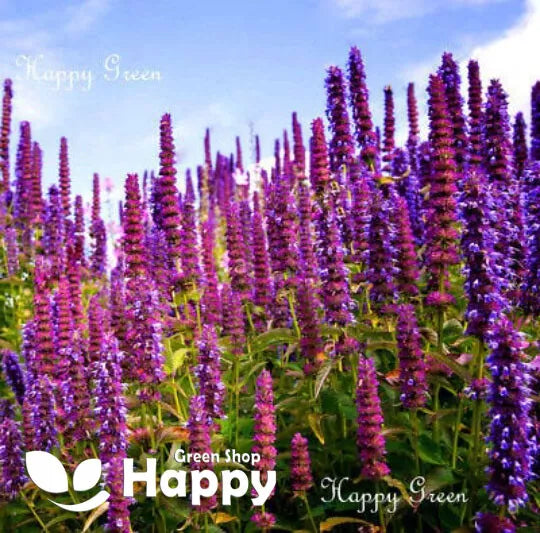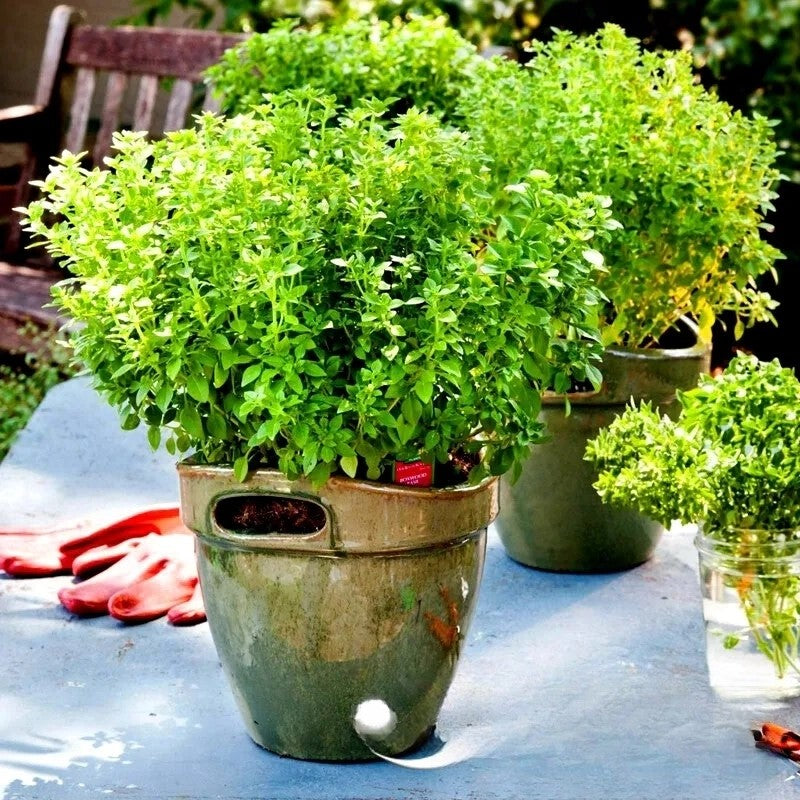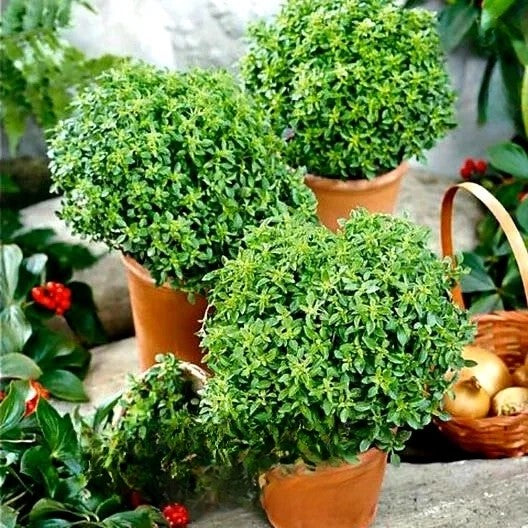Sort by:
47 products
47 products
Lovage Seeds (Levisticum officinale)
Grow a robust, aromatic herb with Lovage (Levisticum officinale). This perennial produces tall, leafy stems with a strong celery-like flavor, perfect for soups, stews, stocks, and herbal infusions. Hardy and long-lived, it’s ideal for herb gardens, perennial beds, and pollinator-friendly plantings.
How to Grow
-
Sow seeds indoors 6–8 weeks before the last frost or directly outdoors in spring.
-
Use fertile, well-drained soil in full sun to partial shade.
-
Sow seeds 0.5–1 cm deep and thin seedlings to 40–50 cm apart.
-
Keep soil consistently moist until germination (14–21 days).
-
Transplant seedlings outdoors after frost risk has passed.
-
Harvest leaves and stems as needed; roots can be harvested in autumn.
Key Features
-
Tall, leafy perennial with strong celery-like flavor
-
Hardy, long-lived, and easy to grow
-
Ideal for soups, stews, stocks, and herbal infusions
-
Attracts pollinators and enhances garden biodiversity
-
Suitable for herb gardens, perennial beds, and companion planting
Ideal For
-
Herb gardens and kitchen beds
-
Culinary use in soups, stews, stocks, and teas
-
Perennial borders and pollinator-friendly plantings
-
Long-term herb cultivation with minimal maintenance
Sowing
-
Best time: Spring indoors or outdoors after frost
-
Depth: 0.5–1 cm
-
Spacing: Thin to 40–50 cm apart
-
Prefers full sun to partial shade and fertile, well-drained soil
Quick Tip
-
Regularly trim leaves to encourage bushier growth and a continuous supply throughout the season.
Lemon Balm – Seeds (Melissa officinalis)
Lemon Balm is a hardy perennial herb valued for its refreshing lemon-scented leaves. Perfect for teas, desserts, and savory dishes, it also makes a soothing herbal remedy often used to promote relaxation. Its fragrant foliage attracts bees and pollinators, while its resilience makes it an easy-to-grow choice for gardens, pots, or borders.
How to Grow
-
Sow indoors: March – May in trays at 18–20°C.
-
Sow outdoors: May – July in a sunny or lightly shaded spot.
-
Thin or transplant seedlings to 30 cm apart.
-
Prefers fertile, well-drained soil.
-
Cut back after flowering to encourage fresh growth.
Key Features
-
Hardy perennial with refreshing lemon scent
-
Aromatic leaves for teas, salads, and cooking
-
Excellent for herbal remedies and relaxation
-
Attracts bees and pollinators
-
Easy to grow in borders or containers
Ideal For
-
Herbal teas and drinks
-
Culinary use in sweet and savory dishes
-
Herb gardens, borders, and patio pots
Sowing & Harvest
-
Sow: March – July
-
Harvest: May – October
Quick Tip
Pick leaves early in the morning for the best flavor and fragrance.
Lavender ‘Hidcote’ Blue – Seeds (Lavandula angustifolia)
Lavender ‘Hidcote’ Blue (Lavandula angustifolia) is a classic compact variety prized for its deep violet-blue flower spikes and aromatic foliage. Ideal for borders, herb gardens, and containers, it attracts bees and butterflies while providing fragrant blooms for cutting and drying. Hardy and low-maintenance, it’s perfect for sunny, well-drained locations.
Why Grow "Hidcote Blue"
-
Deep violet-blue fragrant flower spikes
-
Compact, tidy growth ideal for borders and containers
-
Attracts pollinators such as bees and butterflies
-
Excellent for cutting, drying, and culinary use
Key Features
-
Type: Hardy perennial (Lavandula angustifolia)
-
Height: 30–45 cm
-
Flowering: June–August
-
Position: Full sun, well-drained soil
-
Uses: Borders, herb gardens, containers, pollinator-friendly planting
Ideal For
-
Herb and cottage gardens
-
Pollinator-friendly borders
-
Container planting and edging
-
Fragrant bouquets and dried arrangements
Sowing & Growing
-
Sow indoors: February–April in seed trays
-
Germination: 14–28 days at 18–22°C
-
Transplant seedlings into pots or borders after last frost
-
Space 25–30 cm apart for compact growth
-
Prefers sunny, well-drained soil; avoid overwatering
HERB BEE BALM SEEDS (Monarda didyma)
Add vibrant color and fragrance to your garden with Herb Bee Balm. This perennial produces striking red, pink, or purple flowers atop aromatic foliage, attracting bees, butterflies, and hummingbirds. Easy to grow and low-maintenance, it’s perfect for borders, beds, and pollinator-friendly gardens.
Why Grow "Herb Bee Balm"
-
Showy, fragrant flowers in red, pink, or purple
-
Attracts bees, butterflies, and hummingbirds
-
Low-maintenance, long-flowering perennial
-
Enhances borders, beds, and pollinator gardens
Key Features
-
Type: Perennial (Monarda didyma)
-
Height: 60–90 cm
-
Flowering: Summer (June–September)
-
Position: Full sun to partial shade
-
Uses: Borders, flower beds, pollinator gardens, containers
Ideal For
-
Adding vibrant color and fragrance to borders and beds
-
Pollinator-friendly gardens
-
Containers and patio planting
-
Beginner gardeners seeking easy-to-grow perennials
Sowing & Growing
-
Sow indoors: 6–8 weeks before the last frost
-
Sow outdoors: After frost danger has passed
-
Germination: 10–20 days
-
Space seedlings: 30–40 cm apart
-
Prefers well-drained soil and full sun for best flowering
Greek Oregano – Seeds (Origanum hirtum)
Greek Oregano (Origanum hirtum) is a robust perennial herb, prized for its intensely aromatic leaves that are essential in Mediterranean cooking. Known for its strong flavor, it is a must-have for seasoning pizzas, pasta, roasted meats, and vegetables. Easy to grow and drought-tolerant, it also produces clusters of small white flowers that attract bees and other pollinators.
Why Grow Greek Oregano?
-
Classic Mediterranean herb with strong, authentic flavor
-
Hardy perennial, easy to maintain
-
Drought-tolerant and thrives in poor soils
-
Attracts bees and pollinators when in bloom
Key Features
-
Type: Perennial herb
-
Height: 30–60 cm
-
Spread: 30–45 cm
-
Flowering: June–August
-
Position: Full sun
-
Soil: Light, well-drained
Ideal For
-
Culinary herb gardens
-
Mediterranean and rock gardens
-
Container growing
-
Pollinator-friendly borders
Sowing & Growing
-
Sow indoors: February–April in trays/pots
-
Germination: 10–21 days at 18–22°C
-
Transplant outdoors: After frost risk has passed
-
Direct sow outdoors: May–June
-
Spacing: 25–30 cm apart
-
Harvest leaves regularly for best flavor
Tip: Trim plants after flowering to keep them compact and encourage fresh growth.
Giant Hyssop White – Seeds (Agastache mexicana)
Giant Hyssop White (Agastache mexicana) is a stunning perennial that produces elegant white flower spikes with a delicate fragrance. Blooming from summer to early autumn, its aromatic foliage and nectar-rich flowers are a magnet for bees, butterflies, and hummingbirds. Hardy, drought-tolerant, and easy to grow, it adds vertical structure, fragrance, and brightness to borders, herb gardens, and pollinator-friendly plantings.
Why Grow "Giant Hyssop White"
-
Tall spikes of elegant white flowers
-
Fragrant foliage with a long flowering season
-
Hardy, drought-tolerant, and low-maintenance
-
Highly attractive to pollinators
Key Features
-
Type: Perennial (Agastache mexicana)
-
Height: 60–100 cm
-
Flowering: Summer to early autumn
-
Position: Full sun
-
Uses: Borders, herb gardens, cottage gardens, pollinator planting
Ideal For
-
Adding height and brightness to borders
-
Pollinator-friendly and wildlife gardens
-
Cottage-style and herb gardens
-
Drought-tolerant, easy-care planting
Sowing & Growing
-
Sow indoors: February–April in trays or pots
-
Sow outdoors: April–May after frost
-
Germination: 14–21 days at 18–22°C
-
Thin seedlings 25–30 cm apart
-
Prefers well-drained soil in full sun
-
Water sparingly once established
Giant Hyssop Blue – Seeds (Agastache mexicana)
Giant Hyssop Blue (Agastache mexicana) is a striking perennial producing tall spikes of fragrant blue-purple flowers from summer to early autumn. Its aromatic foliage and nectar-rich blooms make it highly attractive to bees, butterflies, and hummingbirds, ensuring a lively pollinator-friendly garden. Easy to grow and drought-tolerant once established, it adds height, color, and fragrance to borders, herb gardens, and cottage-style beds.
Why Grow "Giant Hyssop Blue"
-
Tall spikes of vibrant blue-purple flowers
-
Aromatic foliage with a long flowering season
-
Hardy, drought-tolerant, and easy to grow
-
Excellent pollinator magnet
Key Features
-
Type: Perennial (Agastache mexicana)
-
Height: 60–100 cm
-
Flowering: Summer to early autumn
-
Position: Full sun
-
Uses: Borders, herb gardens, cottage gardens, pollinator planting
Ideal For
-
Adding vertical height and fragrance to borders
-
Pollinator-friendly and wildlife gardens
-
Cottage and herb garden displays
-
Drought-tolerant, low-maintenance planting
Sowing & Growing
-
Sow indoors: February–April in trays or pots
-
Sow outdoors: April–May after frost
-
Germination: 14–21 days at 18–22°C
-
Thin seedlings 25–30 cm apart
-
Prefers well-drained soil in full sun
-
Water sparingly once established
Garlic Chives – Seeds (Allium tuberosum)
Garlic Chives are a hardy perennial herb prized for their mild garlic flavor and tender, flat green leaves. Perfect for enhancing salads, soups, stir-fries, and garnishes, these chives bring a fresh, aromatic touch to any dish.
Easy to grow and low maintenance, Garlic Chives thrive in garden beds, containers, or raised planters. They are also tolerant of colder climates and will return year after year with minimal care.
How to Grow
-
Sow indoors: February – April
-
Sow outdoors: March – May
-
Plant spacing: 20–25 cm between plants
-
Position: Full sun to partial shade
-
Soil: Fertile, well-drained soil enriched with compost
-
Care: Keep soil consistently moist; trim regularly to encourage fresh growth
Key Features
-
Hardy perennial with tender, flat green leaves
-
Mild garlic flavor ideal for salads, soups, stir-fries, and garnishes
-
Easy to grow and low maintenance
-
Suitable for garden beds, containers, or raised planters
-
Returns year after year with minimal care
Harvest
-
Harvesting period: 60–90 days after sowing
-
Snip leaves as needed; regular harvesting promotes continuous growth.
Short Tip
Trim regularly to prevent flowering and maintain tender, flavorful leaves throughout the season.
Dwarf Minette Greek Basil – 500 Seeds (Ocimum basilicum)
Dwarf Minette Greek Basil is a compact, aromatic basil variety prized for its small, flavorful leaves and strong fragrance. Ideal for Mediterranean cooking, pesto, salads, and garnishes, this basil brings a fresh, aromatic touch to every dish.
Its dwarf habit makes it perfect for garden beds, containers, or windowsills. Easy to grow and fast-maturing, Dwarf Minette Greek Basil provides a steady harvest throughout the growing season.
How to Grow
-
Sow indoors: February – April
-
Sow outdoors: After last frost, spacing 20–25 cm apart
-
Position: Full sun
-
Soil: Fertile, well-drained soil enriched with compost
-
Care: Water moderately; pinch back tips to encourage bushy growth
Key Features
-
Compact dwarf variety with small, flavorful leaves
-
Strong aromatic flavor ideal for Mediterranean dishes, pesto, salads, and garnishes
-
Fast-growing and easy to maintain
-
Suitable for garden beds, containers, or windowsills
-
Continuous harvest when trimmed regularly
Harvest
-
Harvesting period: 60–75 days after sowing
-
Pick leaves regularly to promote new growth and maintain flavor.
Short Tip
Pinch back the growing tips regularly to encourage bushy plants and maximize leaf production.
Showing 18/47



